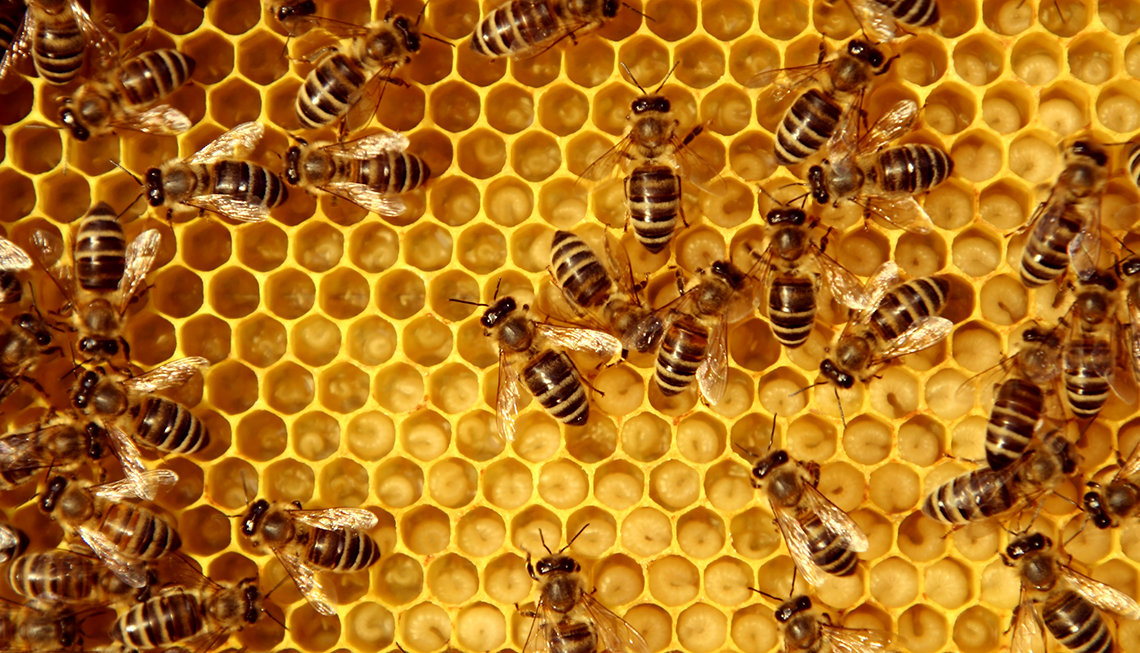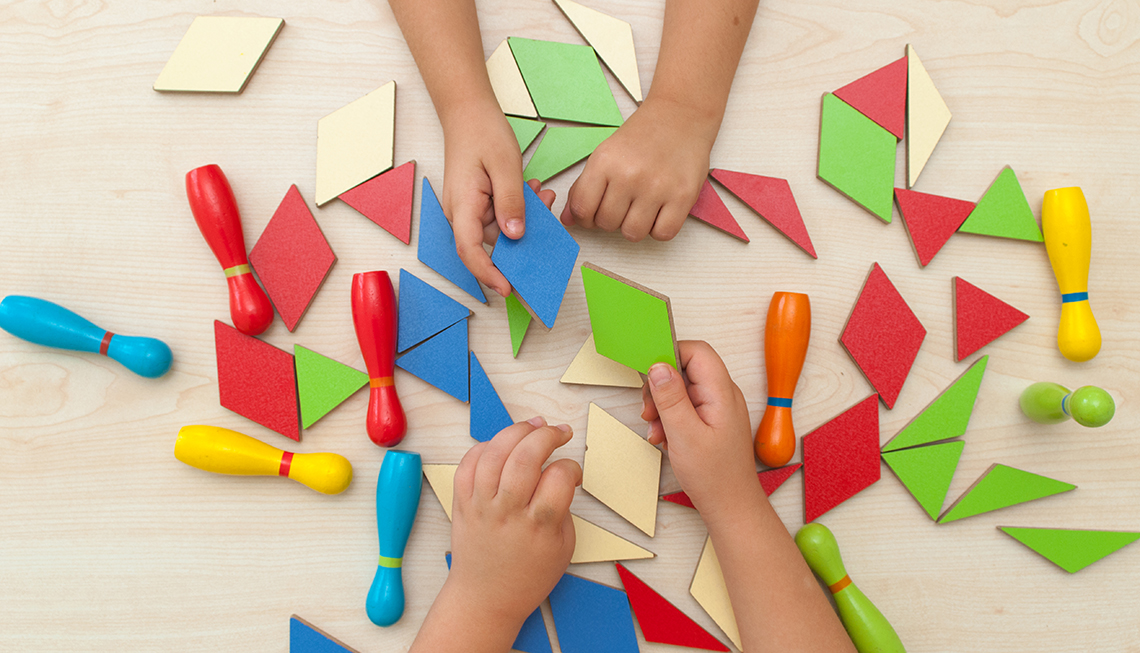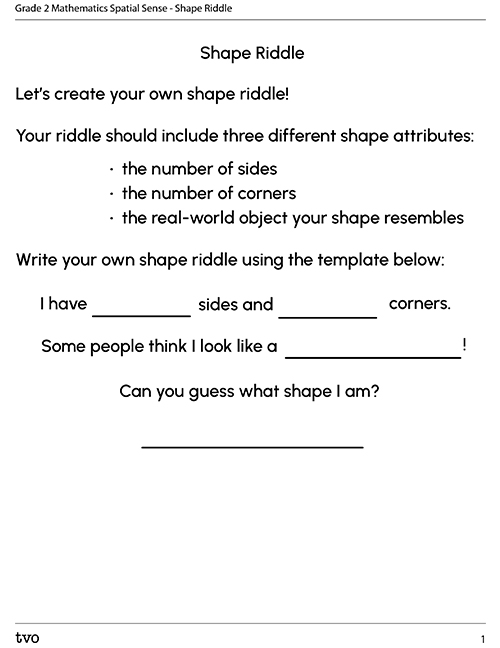Minds On
Real world shapes
Let’s match the shape to the following real-world object.
Select the correct answer, then press ‘Check Answer’ to reveal how you did.
Brainstorm
What do you notice?
While exploring the shapes, reflect on the following questions:
- What do you notice about each shape?
- How are the shapes similar?
- How are the shapes different?
Record your ideas in a notebook or a method of your choice.
Action
Shapes attributes
What makes each two-dimensional shape special?
Each shape has something called attributes.
An attribute is a characteristic that can be used to describe and compare things.
Some attributes of shapes include:
- number of sides
- number of equal side lengths
- number of corners, and if they are square
- types of sides (straight or curved)
Here are some attributes found in a circle and a hexagon.
Circle
A circle is a two-dimensional shape with a curved side.
A real-world example of a circle is a hula hoop.

Hexagon
A hexagon is a two-dimensional shape with six sides and six corners.
A real-world example of a hexagon is beehive cell. The six sides of a beehive cell form a hexagon.

Student Tips
Did you know?
A polygon is a closed shaped with at least three sides and corners.
For example, a triangle, pentagon, hexagon, and octagon are all polygons.
A polygon cannot have curved sides.
Now, let’s explore how shapes are similar and different.
Comparing two-dimensional shapes
How are shapes similar? How are they different?
Let’s examine a square and a rectangle.

Both a square and a rectangle have four sides and four square corners.
A square has four equal side lengths.
A rectangle has two short sides, and two long sides.
Compare: Triangle and pentagon
Now, let’s examine and compare a triangle and a pentagon.
Consider the following:
- How many sides does each shape have?
- How many equal side lengths does each shape have?
- How many corners does each shape have?
- Are the sides straight or curved?

For each sentence, select the missing word from the drop-down menu.
Sorting rule
Let's examine the following groups of shapes.
Determine the sorting rule and explain your thinking. Record your ideas in a notebook or a method of your choice.
Press ‘Sorting Rule’ to reveal the sorting rule for Group 1 Shapes.
Sorting RuleThe sorting rule is to group shapes with more than 3 sides.
Hence, the group has shapes with more than 3 sides.
The triangle is outside of the group because it has 3 sides.
Press ‘Sorting Rule’ to reveal the sorting rule for Group 2 Shapes.
The sorting rule is to group shapes with 4 equal sides.
Hence, the group has shapes with 4 equal sides.
The rectangle is outside of the group because it has 2 sides that are long, and 2 sides that are short.
Consolidation
Shape riddle

Let’s create a shape riddle!
Your riddle should include three different shape attributes:
- the number of sides
- the number of corners
- the real-world object your shape resembles
Riddle example:
I have three sides and three corners. Some people think I look like a pizza slice!
Can you guess what shape I am?
Complete the Shape Riddle activity in your notebook or using the following fillable and printable documents. You can also use a method of your choice to record your riddle.
Student Success
Think and share
If possible, share your riddle with a friend or a parent or guardian.
- Can they guess your shape?
- Can you guess their shape?
Note to teachers: See your teacher guide for collaboration tools, ideas and suggestions.
Reflection
How do you feel about what you have learned in this activity? Which of the next four sentences best matches how you are feeling about your learning? Press the button that is beside this sentence.
I feel...
Now, record your ideas about your feelings using a voice recorder, speech-to-text, or writing tool.
